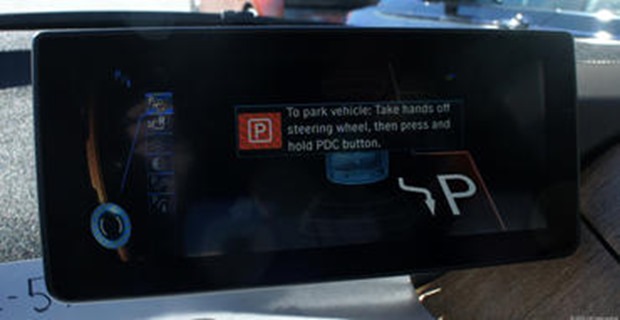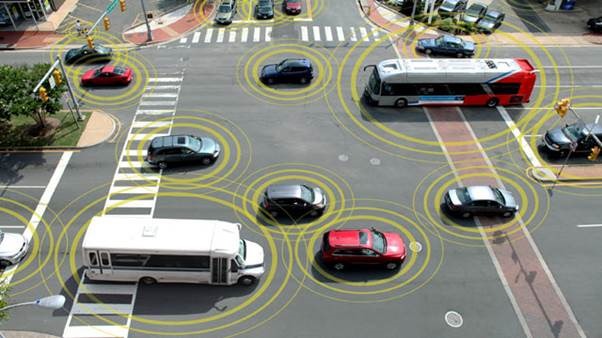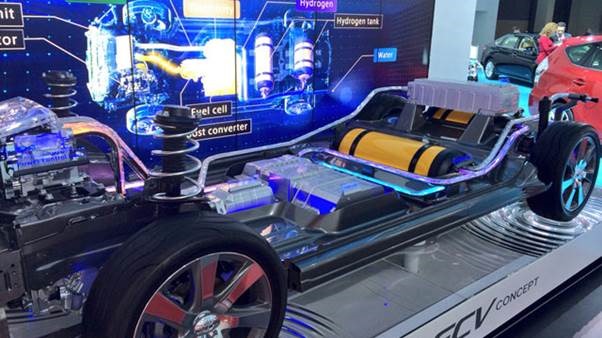A Fascinating Glimpse At Future of Our Cars!
In the era of smartphones and internet at the tip of our fingers, we live in a smart world. We make smarter decisions day in day out for every small or huge matter at hand. The new entrant to the smarter world is smart automobiles, mostly cars.
It all began with semiconductor industry evolving with Integrated Circuits. Decade and a half ago, auto major BMW integrated more processing power in its 750i saloon then NASA’s Apollo 11. The trend has progressed like wildfire since then with an average car today having 30-40 processors. Each designated to serve a purpose: engine, instrumentation, lights, security system, airbags, ABS braking and entertainments system. This is not the end of the list and many cars are now coming equipped with top of the line infotainment systems with so many features such as GPS with Detailed maps with great accuracy and precise point to point navigation, alternate route options with ETA, lane guidance, live traffic updates, construction zones and tolled highways, Intelligent speed assist, Collision avoidance system loaded with inputs from sensors around the car and software designed for Autonomous cruise control system alerts the driver when and if the car is swaying in the wrong lane or speeding towards dead stop vehicle ahead. The cars now even come with Intelligent parking assist – BMW just upgraded it’s parking assist where not only it informs but helps parallel park the car with taking control of the accelerator, brake pedal and steering wheel.
We have all seen Google plunge ahead onto self-driven cars, and they have been successful so far. Their pilot project on the streets of San Francisco has been a success with no incidents reported where self-drive car was at fault.
Other major car manufacturers are coming up with their own versions of driverless cars. A modified Mercedes Benz S500 called the Intelligent Drive research vehicle drove itself 100km from Mannhein to Pforzheim in Germany. This exemplifies the future of cars with the power of internet.
 The BMW i3 backs into the parking spot, dealing with steering and braking on its own. [Source]
The BMW i3 backs into the parking spot, dealing with steering and braking on its own. [Source]
 The i3 shows the driver parking instructions on its main LCD.
The i3 shows the driver parking instructions on its main LCD.
This internet trend is yet to catch on to every car across categories, but with almost all the mid and high end models already loaded with most of these features, these cars will soon be talking to each other.
They won’t be calling to each others numbers, but they will be communicating through internet connectivity while feeding each other with their statistics, each helping other navigating through traffic, sharing information to nearby cars and others over internet about traffic conditions, speed.
These advances will really help the drivers make right decisions about the route and speed helping them avoid traffic jams, prevent accidents and achieve better fuel economy.
Vehicular automation is the future and connected cars hold the key to its success.
The connected cars are paving the way for more autonomous cars. This technology is called vehicle-to-vehicle communications, or V2V for short, and it’s not far off.
Contents [hide]
The Future Cars – What Would They Have?
1) On board Internet:
Today the cars rely on smartphones and dongles for any sort of internet access but in future all cars will have its own independent on board modem with high speeds 4G LTE connectivity or more. Each car will have its own hotspots to connect with adjacent cars, transport systems, cloud and basically the AI running the car.
Thanks to on-board computers, the era of “big data” is coming to the automobile. These rolling computers produce an enormous amount of data – mostly about people’s behavior behind the wheel – that can be analysed to spot trends and fight inefficiencies. And thanks to this data, your car may soon know where you want to go before you even pull out of the driveway.
2) High Intensity Laser and Sensors:
Future cars will be fitted with array of laser, cameras and sensors to create 3D maps of the area around. Various data modeling techniques will be combined with pre-existing maps of the world that will help the car drive itself while avoiding obstacles and obeying traffic laws.
3) No Steering Wheel
Sounds unbelievable? But keep an open mind – Rinspeed showcased a new concept car, called the XchangE, at the 2014 Geneva Motor show. XchangE, explores the potential designs an autonomous car could yield, taking a conventional sedan (Tesla Model S), and using it to demonstrate all the benefits that a driver could enjoy if the task of driving was no longer required, and the most interesting one was the movement of steering wheel to center of the dashboard when the cars in auto drive mode.
4) Tilted 360 degree turnaround seats:
With no need for human interference the seats of future automobiles would be more adjustable and moving with the front driver and passenger seats completely revolving so that they face the rear seat passengers. It’s just like your living room dinner table.
5) Gesture and voice control:
One does not want to look at the LCD panel every now and then for different actions such as change of songs, search destination, call or message while driving the car. The gesture and voice control unit is mounted on instrument panel near the stick for easy access for index finger such as in Audi MMI.
6) Augmented reality HUD(Head’s UP Display):
Another feature limited to Premium cars but is worth the money is the HUD unit which displays all the information for the driver on the front windscreen instead of the LCD Panel so that not to divert drivers attention.
7) Hydrogen Fuel Cell:
Advancements in battery technology is going to drive the future cars. The lab experiments show a lot of promise with new designs of solid state Li-ion batteries which last double than the current version. Hydrogen fuel cell is another contender for the future glory of common fuel being highly efficient it imitates the features of an liquid fuel car.
A new invention demonstrates an artificial method to generate hydrogen from water using artificial photosynthesis (artificial leaf). If viable it can be the potential game changer in the arena of automobile industry.
Auto majors like Mercedes with its F 015 concept at CES 2015 portrays the future of smart cars. Many companies want a piece of future car revolution and want to stay relevant in this competitive environment, but who will take the baton to the hill top is yet to be seen. This will require a holistic approach with collective focus on safety and economy of things.
Furthermore these on road computing power houses are feeding enormous amount of data to the cloud services for analysis and data mining.
These analytics and data mining outcomes will be the learning source for Artificial Intelligence engines where cars will be autonomous, chauffeur less, and make decisions based on highly advanced AI algorithms designed to take advantage from the real time conditions and outcome of data mining results.
The future seems bright for smart cars, but the question remains. Are they smart enough? Or with Complete autonomy and reliance on AI, we are opening gates for trouble. Numerous issues may arise. First and foremost a hacker may hack into your car and take over the control and blackmail you. What happens when your cars computer fails or hangs? You crash!!!
If you lose Internet connectivity do you end up in a swamp instead of the lake you were bound to? Reliability on data source of the computer poses another serious issue. So until these issues are tackled and answered by the car manufacturers it would not be a smart decision to put your complete faith in autonomy and Artificial Intelligence.
[box type=”shadow” ]About the Author: Sagar Das is Business Head at Autoportal.com, a leading automobile website in India. Prior to that he was with India.com heading Product Management & business of ‘OnCars.com’.[/box]






